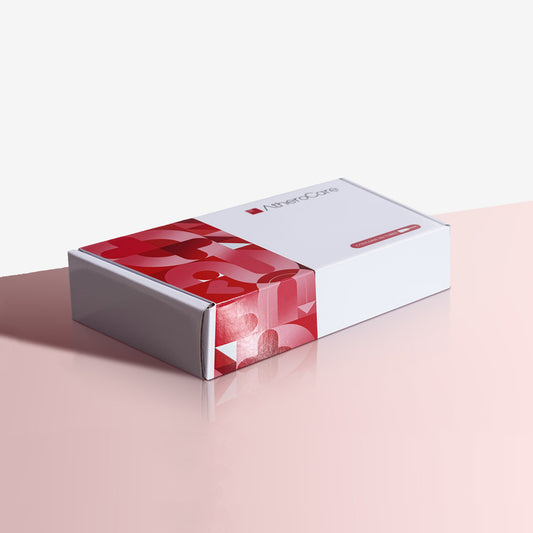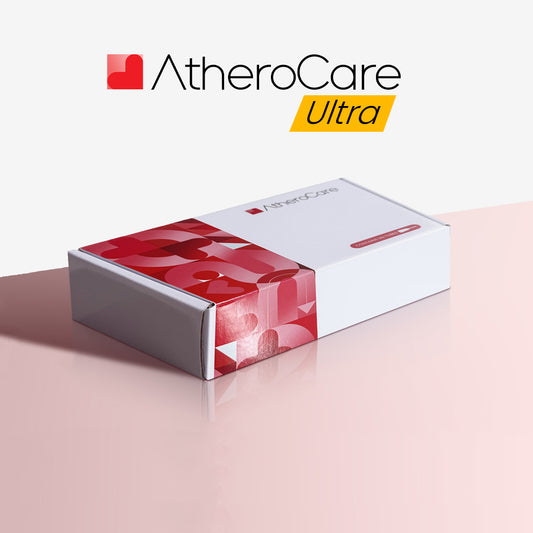Technology is transforming how we understand heart health. From ECG capable watches to cuff based blood pressure monitors and monthly at home blood testing, there’s a tool for almost every need. Below, we break down the pros and cons of six leading solutions - so you can see what each does well, where limitations exist, and how they might fit into your routine.
1) KardiaMobile 6L - Pocket ECG for Quick Rhythm ChecksThe KardiaMobile 6L offers a six lead ECG recording in 30 seconds, giving a clearer view of heart rhythm than single lead devices.
- Pros: Medical grade six lead ECG; detects AFib, bradycardia, tachycardia; portable and Bluetooth enabled; results can be shared easily with clinicians.
-
Cons: Requires steady hand placement; no continuous monitoring; must pair with a smartphone; readings still need confirmation with a clinical ECG.

The Apple Watch is more than a fitness tracker, it’s a wellness hub combining ECG, heart rate alerts, fall detection, and oxygen tracking.
- Pros: Reliable ECG app; real time rhythm notifications; fall detection; medication reminders; integrates with Health app and third party tools.
-
Cons: Battery life around one day; ECG is single lead (basic screening); some users find notifications overwhelming; accuracy may vary with movement.

The WHOOP 4.0 is designed for continuous recovery and strain tracking rather than step counting. It measures 24/7 heart rate, heart rate variability (HRV), respiratory rate, skin temperature, and blood oxygen. Unlike most fitness watches, WHOOP has no screen, instead, it delivers in depth analytics through its mobile app, helping users understand how sleep, stress, and daily exertion affect their cardiovascular performance.
-
Pros:
- Continuous monitoring - tracks heart rate, HRV, and strain around the clock for a holistic view of recovery.
- Deep recovery insights - combines sleep quality, HRV, and resting heart rate to produce personalised recovery scores.
- Non invasive - lightweight strap, comfortable for 24/7 wear with automatic data syncing.
-
Cons:
- Requires a monthly subscription for data access (starting around USD 30–40/month).
- No ECG feature, measures HRV and pulse, but cannot record heart rhythm traces like KardiaMobile or Apple Watch.
- Data heavy — insights are best suited for users comfortable with detailed trend interpretation.
- Battery life ~4–5 days; charging on wrist can be convenient but takes getting used to.

The ScanWatch 2 blends an analog design with heart rate tracking, ECG, SpO₂, and sleep apnea detection. It’s FDA cleared and built for long wear.
- Pros: Discreet style; long battery (up to 30 days); ECG and blood oxygen tracking; auto activity detection; high build quality.
- Cons: Smaller screen; limited smart notifications; no on device voice assistant; some features region specific pending regulatory clearance.

The Omron HeartGuide uses a tiny cuff in its strap to deliver clinically validated blood pressure readings.
- Pros: True cuff based BP measurement; irregular heartbeat alerts; activity/sleep tracking; integrates with HeartAdvisor app for trends.
- Cons: No ECG or rhythm detection; must be correctly positioned for accuracy; bulkier than a standard watch; fewer smart features than Apple or Fitbit.

Rythm Health offers a monthly at home blood test kit with doorstep pickup and dashboard results. Panels may include cholesterol, inflammation (CRP), hormones, thyroid markers, and metabolic data.
- Pros: Convenient home sampling; recurring monthly insights; includes cholesterol and inflammatory markers; integrates multiple biomarkers in one dashboard; free sample pickup; potential FSA/HSA eligibility.
-
Cons: Results require clinician interpretation; subscription based; limited test range compared to full pathology panels; not a diagnostic lab; cost may add up over time.

Each device brings a unique strength to heart health tracking. Some excel in rhythm detection, others in lifestyle coaching, blood-pressure monitoring, or biomarker testing. Here’s how they stack up at a glance:
| Device | Main Focus | Best For | Battery Life | Unique Strength |
|---|---|---|---|---|
| KardiaMobile 6L | 6 lead ECG, rhythm detection | Users wanting detailed heart rhythm readings between clinic visits | Manual (no charge needed) | Medical grade ECG detail in pocket size |
| Apple Watch (Series 10) | ECG, heart rate, safety alerts | Everyday users who want notifications, fall detection, and wellness tracking | ~1 day | Comprehensive heart data + emergency features |
| WHOOP 4.0 | Heart rate variability, recovery, sleep, strain | Performance-focused users who want recovery insights, not step counts | ~4–5 days | Deep HRV and recovery analytics to prevent overtraining |
| Withings ScanWatch 2 | ECG, heart rate, SpO₂, sleep | Those wanting a discreet, analog look with medical features | ~30 days | Hybrid design + exceptional battery life |
| Omron HeartGuide | Cuff-based blood pressure | Individuals monitoring hypertension or wanting true BP readings | ~2 days | Clinically validated cuff built into a watch |
| Rythm Health | Monthly biomarker testing | People wanting regular cholesterol, inflammation, and hormone tracking | N/A (kit based) | At home blood tests with monthly trend data |
Summary: Each tool has its place. If you’re seeking precise ECG readings, KardiaMobile 6L offers clinical level rhythm insight in your pocket. For all day tracking and on wrist alerts, the Apple Watch remains a balanced, accessible choice. WHOOP 4.0 stands out for deep recovery and HRV analytics, helping users connect effort with recovery. The Withings ScanWatch 2 brings elegant design and exceptional battery life for continuous tracking. For reliable blood pressure data, Omron HeartGuide is hard to beat. And if you want to complement wearables with lab quality data, Rythm Health fills that gap through regular biomarker testing.
No single device delivers the full picture of heart health. Wearables excel at daily trends, capturing movement, rhythm, and recovery. While Rythm Health’s monthly tests uncover deeper markers of inflammation, cholesterol, and metabolism. Used together, these tools empower you to spot changes early and have more informed discussions with your healthcare provider. The key is not collecting more data, but turning those insights into meaningful action.
Compliance & Safety ReminderThis article is for educational purposes only and does not provide medical advice. AtheroCare products are not approved by the FDA, TGA, or EMA as therapeutic tools and are not intended to diagnose, treat, cure, or prevent any disease. Always consult a qualified healthcare professional before making changes based on wearable or lab data.







